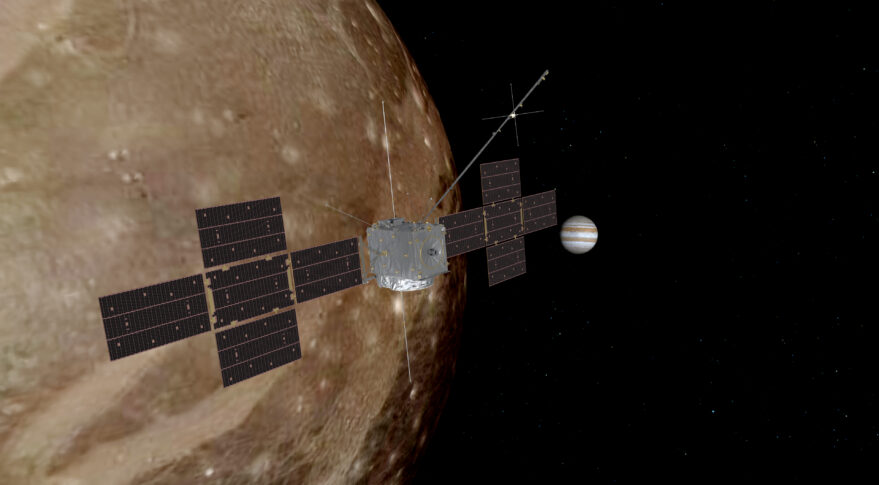TAMPA, Fla. — The satellite behind Europe’s next flagship space mission is ready to be sent to French Guiana for an April launch to explore three of Jupiter’s largest icy moons, manufacturer Airbus announced Jan. 20.
The Jupiter Icy Moons Explorer (JUICE) has been undergoing final assembly and testing for nearly a year and a half in France with Airbus, which was selected as prime contractor back in 2015.
Final preparations included the integration of a huge 100-square-meter solar array, developed by Germany’s Azur Space, to ensure the spacecraft has enough power 740 million kilometers away from the sun.
Airbus is set to ship JUICE in early February to Arianespace’s launchpad in Kourou, French Guiana, where it is slated to launch on one of the last two remaining Ariane 5 rockets before Ariane 6’s debut in late 2023.
It took nearly 500 Airbus employees and more than 80 companies across Europe to get the spacecraft ready for its journey to the Jupiter system, said Cyril Cavel, JUICE’s project manager at Airbus Defense and Space.
It would take the 6,200-kilogram spacecraft around eight years to reach Jupiter’s orbit in July 2031 following a series of gravity-assist flybys in the inner solar system.
JUICE is equipped with 10 instruments to study magnetic fields in the Jupiter system and potentially ocean-bearing moons Ganymede, Europa, and Callisto — including cameras, an ice-penetrating radar, a radio-science experiment, and sensors for measuring altitude and other data.
The European Space Agency (ESA) hopes to use JUICE to peer below icy moon surfaces to investigate their potential habitability for microbial life.
Following nearly three and a half years performing flybys of Ganymede, Europa, and Callisto while orbiting Jupiter, the spacecraft is due to enter orbit around Ganymede in December 2034 for a closer look at the largest moon in the solar system.
After concluding a mission estimated to cost around 1.5 billion euros ($1.6 billion), ESA anticipates JUICE will ultimately crash into Ganymede in late 2035 after running out of the fuel needed to maintain its orbit around the moon.
Meanwhile, NASA’s Europa Clipper mission, slated to launch next year but due to be inserted into Jupiter’s orbit in 2030 shortly before JUICE, aims to focus on investigating whether Europa has the ingredients necessary for life.

